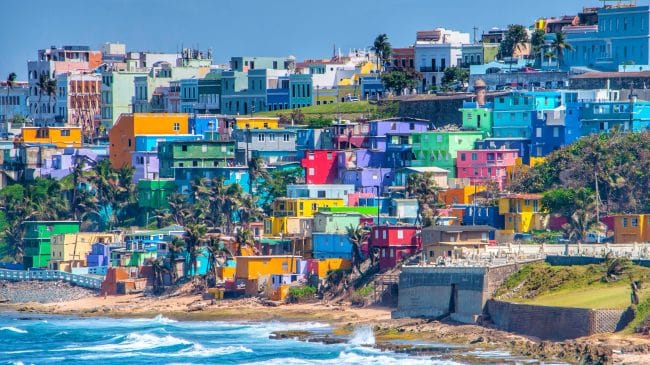With Puerto Rico still working its way out of the largest ever US municipal bankruptcy, issuing new bonds might seem both irrational and impossible. But in the not-too-distant future, Puerto Rico’s governments are likely to want to borrow again in the municipal bond market. In order to borrow affordably, the commonwealth needs to adopt much more transparent financial practices.
First, while it is true that borrowing to cover operating costs is bad public policy, financing new infrastructure through bonds often makes sense. New infrastructure often costs more than a government can afford at construction time but provides benefits for decades after projects are finished. Borrowing allows governments to align costs and benefits across time. As a new building or bridge depreciates, the principal is paid down. If the bonds are paid off as fast or faster than the property depreciates, and if interest and other financing costs are reasonable, infrastructure borrowing makes sense in Puerto Rico or anywhere else.
But wouldn’t a defaulting borrower like Puerto Rico be doomed to many years of unaffordable interest rates? Recent history suggests otherwise. Just five years after declaring bankruptcy, the city of Detroit, Michigan, returned to the municipal bond market, issuing $135 million of bonds at interest rates of 5 percent or less.
Also, while Puerto Rico has poor credit, some cities (known as municipios) may be able to tap the market, offering triple tax-exempt securities that may interest investors in high tax locations like New York City and California. Before World War II, several Puerto Rico cities issued municipal bonds. After the war, local financing was centralized under the Government Development Bank (GDB). But the GDB is being shut down in compliance with the 2016 Puerto Rico Oversight, Management, and Economic Stability Act.
Abre Puerto Rico, a group promoting open government, recently reviewed audited financial statements filed by Puerto Rico municipios. The Abre researchers found several cities in good financial condition—at least as of June 30, 2017, shortly before Hurricane Maria hit the island.
Fajardo, the city that normally tops Abre’s fiscal rankings, reported a general fund surplus. The city of Isabela had a general fund deficit but showed an improvement in its government-wide net position reported on an accrual basis. The city has made a strong recovery from Maria and is once again welcoming tourists.
If either these cities or the commonwealth itself wants long-term infrastructure financing, they will need to appeal to an investment community that has taken major losses on Puerto Rico debt. A good way to reassure investors is to provide a high level of transparency.
In this regard, most cities have a big jump on the commonwealth. In its latest survey, Abre found that 64 of Puerto Rico’s 78 municipios had filed audited financial statements. By contrast, Puerto Rico is just now producing its 2016 audit. Fiscal 2017 statements are expected in September and fiscal 2018 statements are supposed to be published in March 2020. Since the fiscal year ends in June, the 2018 statements will appear 21 months after the fiscal year’s conclusion —if the publication schedule is met. This compares poorly to the municipal market norm of six-to-nine months.
Not only are the commonwealth’s statements late, but they are also replete with audit issues. The auditing firm KPMG’s opinion of Puerto Rico’s 2015 financials contained disclaimers, qualifications and bases for adverse findings. Many, but not all, of the problems were the result of Puerto Rico’s Employee Retirement System failing to report pension debts in compliance with Governmental Accounting Standards Board Statement Number 68. This factor also affected Fajardo and Isabela’s statements, which were otherwise clean.
It will be easier for Puerto Rico instrumentalities to borrow money for infrastructure if they produce timely financial statements with unqualified opinions—as Detroit is now doing. While Puerto Rico publishes periodic financial updates with recent numbers, these are no substitute for audited financial statements adhering to GASB standards. Such statements benefit from being comparable to reports of other US state and local governments, and from the blessing of an independent Certified Public Accounting (CPA) firm. CPAs are not perfect, but at least they provide an additional set of experienced eyes that have an incentive to manage the reputation risk arising from botched or fraudulent financial statements.
To further engage investors, Puerto Rico and its cities may want to go one step further, by joining the trend toward “machine-readable” financial statements. Last year, Florida passed a law to migrate its local governments toward this more modern financial reporting technology. Chapter 2018-102 of the Laws of Florida law, enacted with the passage of HB 1073 last year, requires cities to report their financial statements in XBRL, the same technology used by US corporations. Instead of lengthy PDFs, financial reporting will take the form of tagged text documents that can be readily processed and searched by analytical tools.
New borrowing to modernize Puerto Rico infrastructure may seem like a distant fantasy, but, as Detroit has shown, it is well within the realm of possibility. Now, however, is the time to improve government financial transparency if Puerto Rico hopes to return to the market in the near future.

